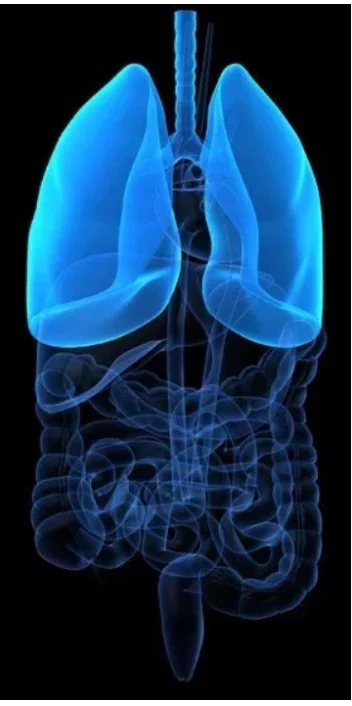Undetectable METex14 Following Savolitinib Is Associated with Higher PFS, OS in NSCLC
Patients with non‒small cell lung cancer whose circulating tumor MET Exon 14 is undetectable following treatment with savolitinb are more likely to have positive outcomes.

Patients with non‒small cell lung cancer (NSCLC) whose circulating tumor (ctDNA) MET Exon 14 (METex14) is undetectable following treatment with savolitinb are more likely to have positive outcomes, according to a poster presented during the 2021 Virtual American Association for Cancer Research Annual Meeting in April 2021.1
“METex14 clearance upon savolitinib treatment was correlated with significantly longer progression-free survival [PFS] and overall survival [OS] compared with those who had detectable METex14,” said lead author Yongfeng Yu, MD, of the Shanghai Chest Hospital, Shanghai Jiao Tong University in Shanghai, China.
He cautioned the sample size was small and confirmation of the finding with a larger sample size was needed.
The median PFS for patients treated with savolitinib who had undetectable METex14 (n = 14) was 30.3 months (95% CI, 6.8-NC) with a hazard ratio (HR) of 0.72 (95% CI, 0.28-1.87; P = .501). The median OS for these patients was 35.8 months (95% CI, 14-NC) with an HR of 0.89 (95% CI, 0.25-3.18; P = .835).
For patients who had detectable METex14 following treatment (n = 10), the median PFS was 5.5 months (95% CI, 0.66-5.6) with an HR of 4.94 (95 CI, 1.83-13.36; P = .002). The median OS for these patients was 8.7 months (95% CI, 0.8-10.6). HR was 7.06 (95% CI, 2.39-20.89; P <.001).
For patients treated with savolitinib who were non-evaluable for METex14 (n = 22), the median PFS was 4.1 months (95% CI, 4.0-6.9). HR was 3.45 (95% CI, 1.48-8.03; P = .006). The median OS for these patients was 10.6 months (95% CI, 4.8-12.0). HR was 5.88 (95% CI, 2.24-15.47; P <.001).
METex14 was undectable for 20 patients at baseline. The median PFS for those patients was 13.8 months (95% CI, 4.2-22.1) and the median OS was not calculable.
Investigators also studied concurrent gene alterations with METex14 and noted alterations with likely resistance to savolitinib including KRAS, NRAS, PIK3CA, BRAF, FGF19 amplification, and others.
Savolitinib is a potent and selective MET tyrosine kinase inhibitor. The agent previously demonstrated clinical efficacy and a manageable safety profile in Chinese NSCLC patients with METex14 alterations in a phase 2 study (NCT02897479).
In the analysis presented at AACR, investigators studied ctDNA analysis of METex14 at baseline and clearance upon treatment using next generation sequencing, QIAamp Circulating Nucleic Acid Kit from Qiagen. They collected plasma samples pre-dose and at tumor assessment visits, until disease progression or end of treatment. Data cut-off was August 2020.
Sixty-six patients provided baseline plasma samples, of which METex14 ctDNA was detectable in 46 (70%) patients. Of these patients, investigators were able to evaluate 24 patients for clearance of METex14. Fourteen of those 24 achieved ctDNA clearance with a median time to clearance of 1.4 months of treatment.
In a previously published analysis of patients in this phase 2 study, savolitinib demonstrated promising anti-tumor activity and acceptable tolerability in METex14+ NSCLC patients.2 As of October 31, 2019, 593 patients were pre-screened/screened and 87 were identified as having METex14+; 70 of these patients were treated.
Sixty-one patients in this study were efficacy evaluable by independent review committee assessment. The objective response rate was 47.5% (95% CI, 34.6%-60.7%) with a disease control rate of 93.4% (95% CI, 84.1%-98.2%). The median duration of response has not been reached. The median PFS was 6.8 months (95% CI, 4.2-13.8) among all treated patients.
The most common (greater than or equal to 20%) treatment-related adverse events (TRAEs) were peripheral edema, nausea, increased AST/ALT, vomiting and hypoalbuminemia. The incidence of grade 3 or higher TRAEs was 41.4%. TRAEs leading to treatment discontinuation occurred in 14.3% patients, the most common of which are liver injury and hypersensitivity (2.9% each).
The therapy’s developer, Hutchinson China MediTech, has applied for regulatory approval in China for the treatment of NSCLC with METEx14 skipping mutations, the first application globally and the first for a selective MET inhibitor in China. China’s National Medical Products Administration has granted the therapy priority review status.3
References
- Yu Y, Ren Y, Fan J, et al. ctDNA analysis in the savolitinib phase II study in non‒small cell lung cancer (NSCLC) patients (pts) harboring MET exon 14 skipping alterations (METex14). Presented at: 2021 AACR Virtual Annual Meeting; April 10-15, 2021; Virtual. Poster CT158
- Lu S, Fang J, Li X, et al. Phase II study of savolitinib in patients (pts) with pulmonary sarcomatoid carcinoma (PSC) and other types of non-small cell lung cancer (NSCLC) harboring MET exon 14 skipping mutations (METex14+). J Clin Oncol. 2020; 38, no. 15_suppl:9519-9519. doi: 10.1200/JCO.2020.38.15_suppl.9519
- Chi-Med’s NDA for savolitinib in non‒small cell lung cancer granted priority review in China. Hutchinson China MediTech Limited. News release. July 28, 2020. Accessed April 10, 2020. https://www.hutch-med.com/nda-for-savolitinib-in-nsclc-granted-priority-review-in-china/



